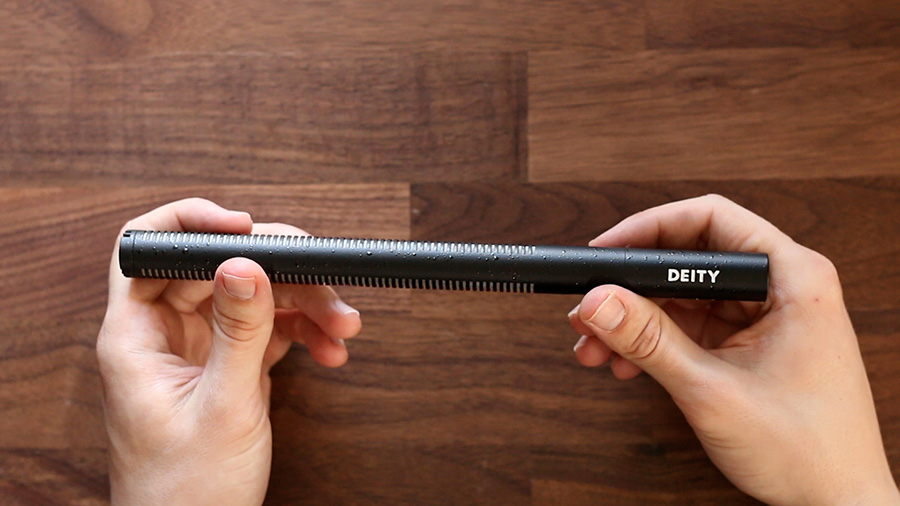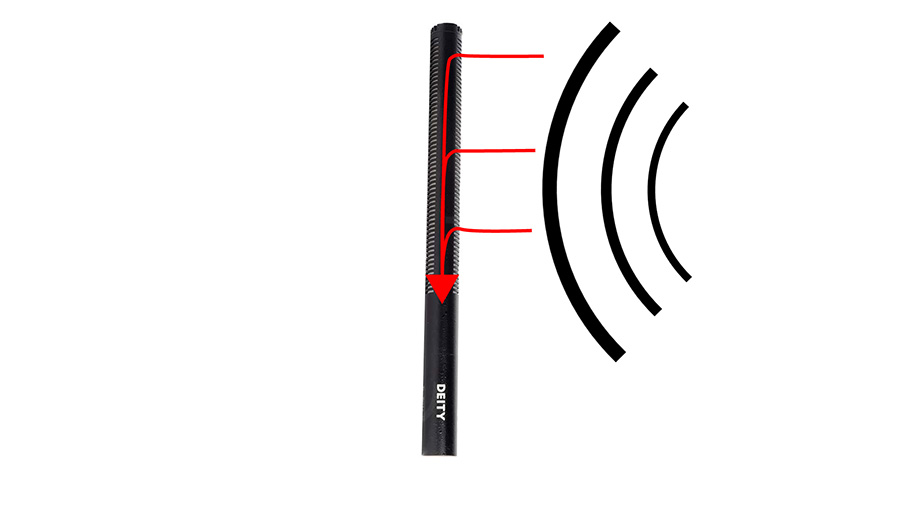What Is A Shotgun Microphone?
A shotgun microphone (sometimes called an interference tube microphone) is a microphone designed to capture sound from the end and reject sound from the sides. They are commonly used for film and video, where on-screen microphones are not possible and room noise is a concern.
When To Use A Shotgun Microphone
The reason I use a shotgun microphone is because I want to minimize room noise in the recording without having a microphone on screen.
Of course, if I had a microphone on screen, it would sound much closer with even less room noise and with less preamp gain required. There are certainly drawbacks to close microphones though…
Plosives, or p-pops, can be difficult to remove from a recording and they are impossible to hear while recording, unless you monitor with headphones as you record. There is a similar problem with lavalier microphones, where the recording could be ruined if the person speaking accidentally brushes the microphone. If I place a regular supercardioid microphone more than about 18 inches away, it will start to sound too distant for recording speech.
A shotgun microphone allows me to get a clean recording without handling noise, plosives or on-screen mics.

How Shotgun Microphones Work
Let’s take a closer look at how shotgun microphones work. There are a few technologies at play here and I want to focus on two of them: Supercardioid Polar Patterns and Interference Tubes
Supercardioid Polar Pattern
Shotgun microphones typically have a supercardioid polar pattern, which means they are a bit more directional than cardioid mics and have a small lobe at the rear.

Interference Tube
What gives a shotgun microphone the ability to reject sound from the sides even better than a simple supercardioid polar pattern is the interference tube. The interference tube is placed at the front of the microphone capsule, which creates a single direct pathway from the end of the tube to the capsule.

However, any sounds originating from the sides of the mic will need to enter through the slots along the interference tube in order to reach the microphone capsule. A sound from the side will, therefore, take various pathways to the microphone capsule and each pathway is a different distance.
The various pathways will interact, resulting in phase interference and an overall reduced signal level.

Limitations Of Shotgun Microphones
I wish I could say that shotgun microphones can miraculously capture perfect sound from several meters away, but that’s just not true.
Unfortunately, this seems to be the promise of some of the marketing around shotgun microphones. Some of the most egregious claims come from the manufacturers of ultra-short shotgun mics. While these small shotgun microphones would be an improvement over the built-in microphone on a camera, they are by nature less effective than longer shotgun mics.
Most standard-length interference tubes are only effective from about 2kHz and above. Below that, they are basically just regular supercardioid microphones. Sure… They make ultra-long shotgun microphones that are effective at lower frequencies, but at some point, the benefit is outweighed by the extra distance that’s required between the source and the capsule!
The polar pattern graphs that you’ll often find on the manufacturer’s website are useful for getting a general idea of the microphone’s pattern, but they are smoothed representations of the raw data. In reality, there are many peaks and nulls at various frequencies that aren’t shown on the graph.
The effectiveness of an interference tube depends on the wavelength of a sound, its angle of incidence, the length of the tube, and the slot spacing. This all adds up to a very irregular response to off-axis sounds, which means the frequency balance of off-axis sounds is colored by the interference tube. This is especially problematic when an off-axis sound moves relative to the microphone.
You might also run into problems in especially reverberant spaces. In small rooms with many reflected pathways from the source to the microphone, the on-axis and off-axis sound will be too similar. It’s best to use a shotgun mic when there is a distinct sound source on-axis to the microphone.
Shotgun mics are very useful – don’t get me wrong – but it’s important to understand the limitations so you can avoid the drawbacks of using a shotgun mic.
